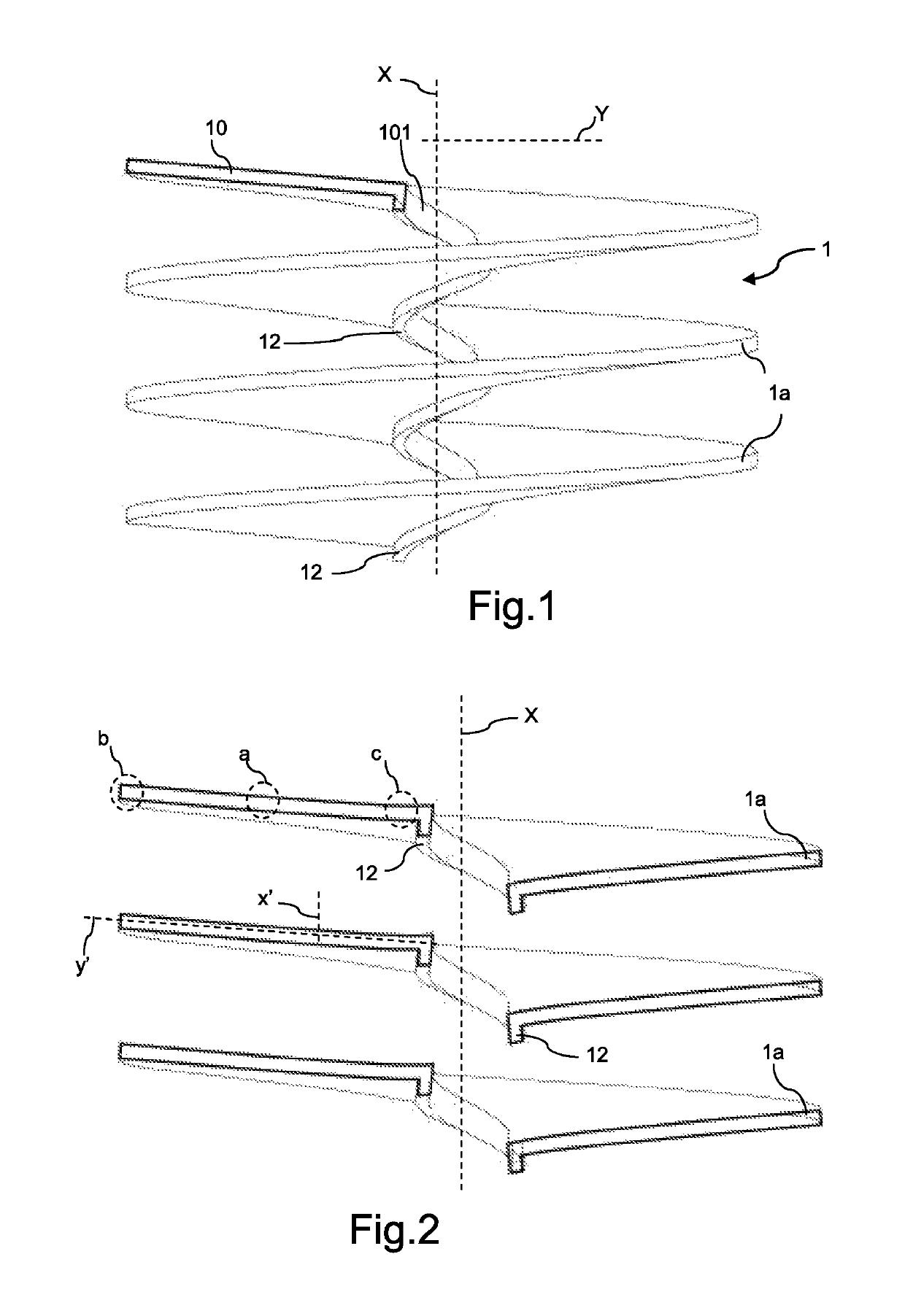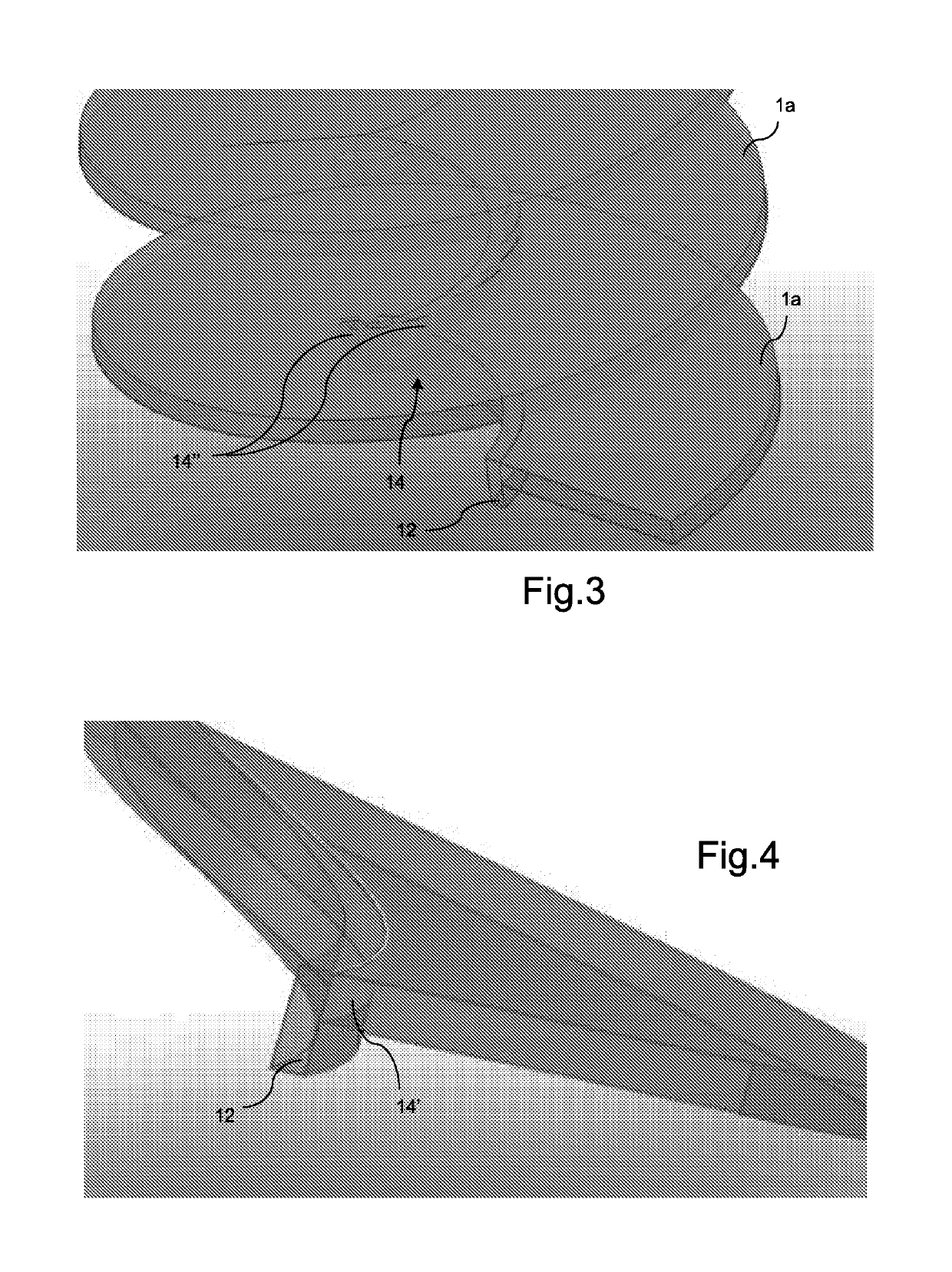Filtering device for dust and other pollutants
a filter device and dust filter technology, applied in the direction of dispersed particle separation, human health protection, separation processes, etc., can solve the problems of high maintenance costs, frequent periodic maintenance, system drawbacks, etc., and achieve low construction and management costs, the effect of efficient purification of fumes
- Summary
- Abstract
- Description
- Claims
- Application Information
AI Technical Summary
Benefits of technology
Problems solved by technology
Method used
Image
Examples
Embodiment Construction
[0024]With reference to the aforementioned figures, the device comprises a substantially spiral duct 1 which extends spirally around a vertical axis or generatrix X in the form of superimposed volutes 1a. The generatrix also defines the direction of advancing movement of the fumes from an inlet mouth (not shown) to an outlet mouth 10 of said spiral.
[0025]In even greater detail and with reference in particular to FIG. 2, the inlet mouth and the outlet mouth are arranged in an operational continuous manner in relation to the spiral.
[0026]The filter is arranged vertically, namely the inlet mouth and outlet mouth are arranged mutually superimposed along the generatrix. Optionally, the outlet mouth and the inlet mouth may be inverted, namely the flow of the fumes may travel equally well along the spiral upwards (in this case the inlet mouth is arranged at a height lower than that of the outlet mouth) or downwards (in this case the inlet mouth is at greater height than the outlet mouth).
[...
PUM
| Property | Measurement | Unit |
|---|---|---|
| angle | aaaaa | aaaaa |
| angle | aaaaa | aaaaa |
| diameter | aaaaa | aaaaa |
Abstract
Description
Claims
Application Information
 Login to View More
Login to View More - R&D
- Intellectual Property
- Life Sciences
- Materials
- Tech Scout
- Unparalleled Data Quality
- Higher Quality Content
- 60% Fewer Hallucinations
Browse by: Latest US Patents, China's latest patents, Technical Efficacy Thesaurus, Application Domain, Technology Topic, Popular Technical Reports.
© 2025 PatSnap. All rights reserved.Legal|Privacy policy|Modern Slavery Act Transparency Statement|Sitemap|About US| Contact US: help@patsnap.com



